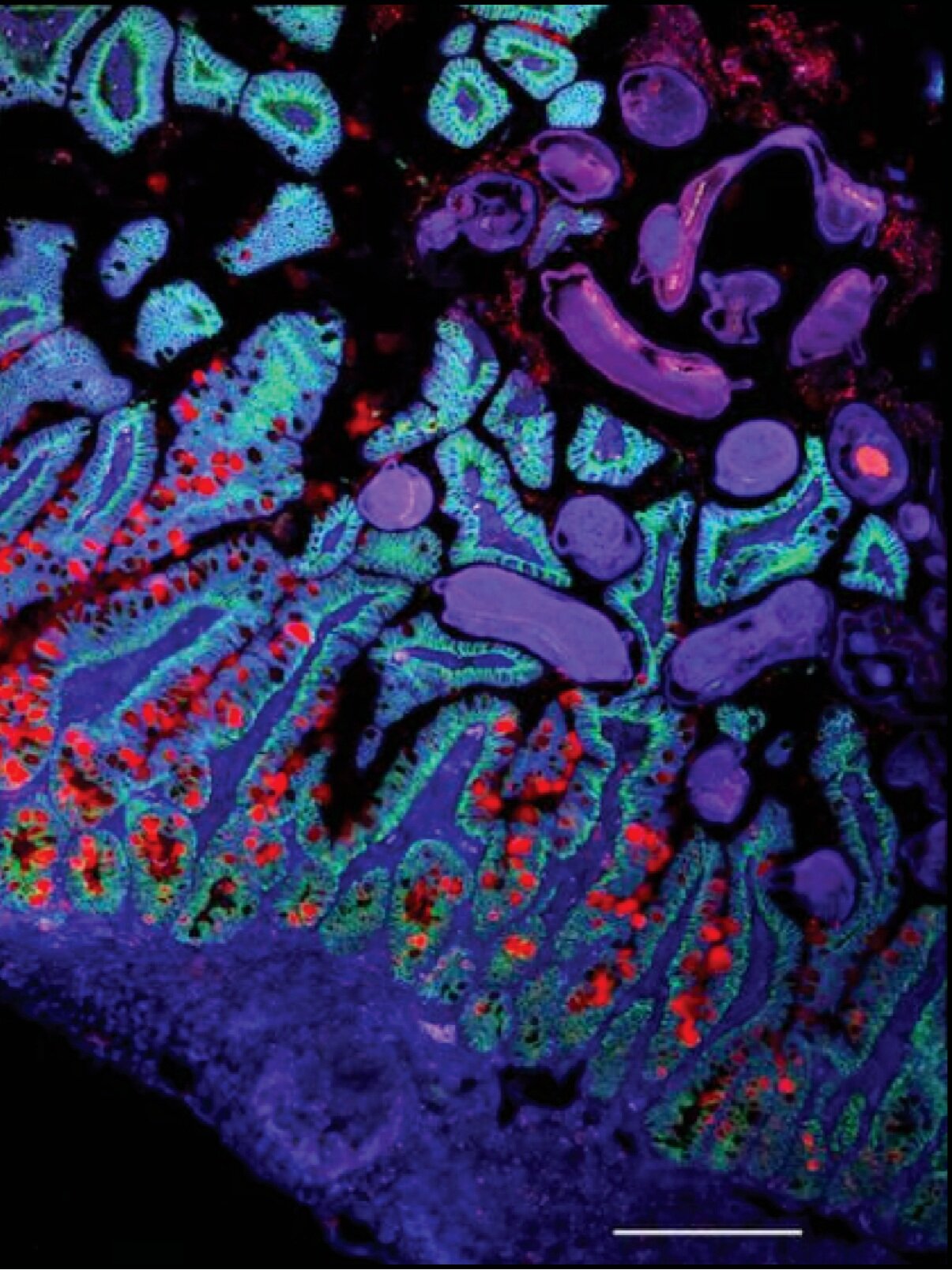We study microbial life on the human body.
Mammals have co-evolved with their microbiota for millions of years, resulting in ancient symbioses that profoundly affect human health. Specific microbes are linked to epithelial differentiation (stem cell biology), the development and function of the immune system (immunology), and the structure of the enteric nervous system (neurobiology), whereas microbial dysbiosis is a hallmark of several diseases. Our lab develops experimental and computational methods to understand the mechanisms of these interactions.
Host-microbiome interactions
A major focus of our lab is to develop systematic approaches to map interactions between the microbiome and host tissues. We recently built the first cell atlas of the human colon (Cell, 2019) and the enteric nervous system (Cell, 2020). We will deploy these and other methods, such as spatial transcriptomics, to understand how specific microorganisms impact the development and function of human cells. Within tissues, we are broadly interested in predicting multicellular circuits, with the goal of connecting the microbes and metabolites to tissue physiology and disease.
Microbiome evolution during disease
We also study how ancient and recent evolutionary processes shape the human microbiome. We uncovered a global network of horizontal gene transfer connecting diverse human microbes (Nature, 2012) and developed methods to track bacterial strains in metagenomes (Cell Host & Microbe, 2018). We will extend this work to understand how microbes adapt to several diseases including inflammatory diseases. We are also interested in understanding patterns of host-microbiome co-evolution across the tree of life.
Computational methods for spatial transcriptomics
Lastly, we are developing computational methods to understand tissue biology and disease. Specifically, we are using single cell and spatial transcriptomics data to:
Reconstruct cell-cell interactions and multicellular tissue circuits
Interpret human genetics by mapping disease risk loci to their cells, genes, and pathways of action.
Understand the development, function, and spatial organization of mammalian tissues



